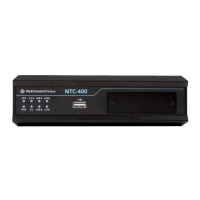Item Notes Description
User Name (String format: any text)
Password (String format: any text)
Protocol (Select FTP or SFTP)
Encryption (Select Plain, Explicit FTPS or Implicit FTPS)
Transfer mode (Select Passive or Active)
Server
IP/FQDN
Mandatory field. Specify the IP address or FQDN used for the external server.
Server Port Mandatory field. Specify the Port used for the external server.
The default server port number will be differ depending on which server type
you select:
Email Server: port 25 by default
Syslog Server: port 514 by default
RADIUS Server: port 1812 by default
Active Directory Server: port 389 by default
LDAP Server: port 389 by default
UAM Server: port 80 by default
TACACS+ Server: port 49 by default
SCEP Server: port 80 by default
FTP(SFTP) Server: port 21 by default
Server Enabled by default Click Enable to activate this External Server.
Save Button Click Save to save the settings
Undo Button Click Undo to cancel the settings
Refresh Button Click the Refresh button to refresh the external server list.
Table 118 – External Server Configuration
4.5 Certificate
In cryptography, a public key certificate (also known as a digital certificate or identity certificate) is an electronic document
used to prove ownership of a public key. The certificate includes information about the key, information about its owner's
identity, and the digital signature of an entity that has verified the certificate's contents as genuine. If the signature is valid,
and the person examining the certificate trusts the signer, then they know they can use that key to communicate with its
owner.
In a typical public-key infrastructure (PKI) scheme, the signer is a certificate authority (CA), usually a company such as
VeriSign™ which charges customers to issue certificates for them. In a web of trust scheme, the signer is either the key's
owner (a self-signed certificate) or other users ("endorsements") whom the person examining the certificate might know and
trust.
Certificates are an important component of Transport Layer Security (TLS, also known by its older name SSL), where they
prevent an attacker from impersonating a secure website or other server. They are also used in other important applications,
such as email encryption and code signing or in IPSec tunnelling for user authentication.

